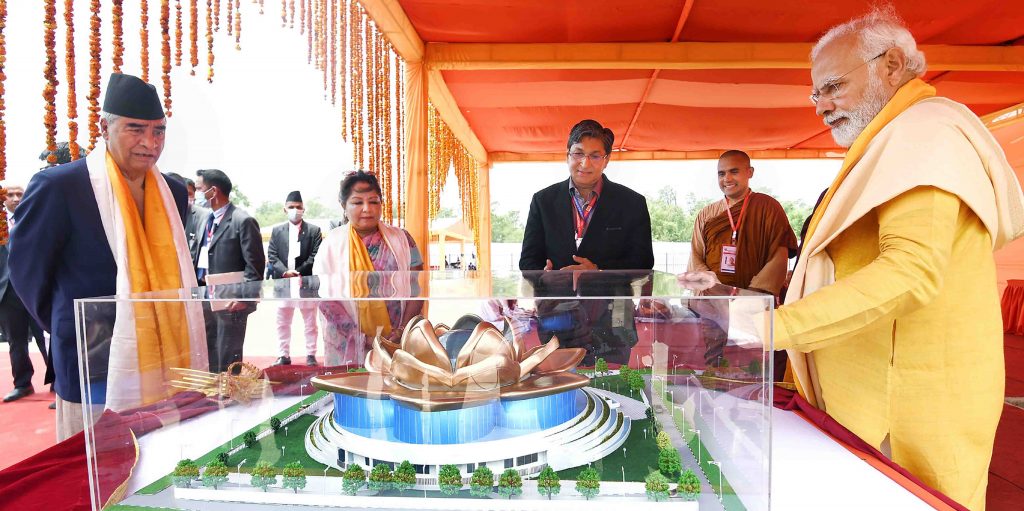Lumbini (Nepal): Prime Minister Narendra Modi along with his Nepalese counterpart Sher Bahadur Deuba laid Monday the foundation stone for a technologically-advanced India International Centre for Buddhist Culture and Heritage here in Lumbini which is Lord Buddha’s birthplace here. Once completed, the Centre will be a world-class facility welcoming pilgrims and tourists from all over the world to enjoy the essence of spiritual aspects of Buddhism, projecting India’s growing soft power.
“Taking forward our cultural ties. PM @narendramodi and PM @SherBDeuba perform Shilanyas ceremony of the India International Centre for Buddhist Culture & Heritage,” Ministry of External Affairs (MEA) Spokesperson Arindam Bagchi said on Twitter. “The centre is being built at the initiative of the International Buddhist Confederation, New Delhi,” he said.
PM Modi said that the India International Centre for Buddhist Culture and Heritage in the Lumbini Monastic Zone will be an important centre for learning and cultural exchanges between India and Nepal.
“Honoured to have performed the Shilanyas for the Centre with PM @SherBDeuba,” Modi said on Twitter. “Most importantly, the International Centre will strengthen the shared bond of Buddhism between India and Nepal. It will also further popularise the teachings and noble ideals of Lord Buddha,” Modi said in another tweet.
It will be a modern building, NetZero compliant in terms of energy, water and waste handling, and will house prayer halls, meditation centres, library, exhibition hall, cafeteria, offices and other amenities, the MEA said in a statement.
The International Centre will be constructed by the International Buddhist Confederation (IBC), New Delhi, on a plot allocated to the IBC by the Lumbini Development Trust (LDT), under an agreement between the IBC and the LDT signed in March 2022, it said.
After the ‘shilanyaas’ ceremony, which was performed by monks belonging to three major Buddhist traditions, Theravada, Mahayana and Vajrayana, the two Prime Ministers also unveiled a model of the Centre.
According to official sources, the significance of Prime Minister Modi laying the foundation stone of the International Centre was that India, despite being one of the main centres of Buddhism in the world, had no centre or project in Lumbini.
Countries like Thailand, Canada, Cambodia, Myanmar, Sri Lanka, Singapore, France, Germany, Japan, Vietnam, Austria, China, South Korea and the US are all represented by Centres of projects in the Monastic Zone, they said.
Under the ‘Lumbini Master Plan’ of the Government of Nepal, approved in 1978, the Lumbini Monastic Zone came into being as a place housing Buddhist monasteries and projects from various denominations and countries.
For last three decades, while countries sought and received parcels of land within the Zone, India remained out. Time was also running out as only two plots of land remained vacant as per the original master plan.
Under Modi’s government, the issue was raised at the highest level with Nepal. As a result of constant follow-up and positive efforts from both governments, in November 2021, the Lumbini Development Trust allocated a plot (80 metres x 80 metres) to the IBC to build a project, the sources said. This was followed up with detailed agreement between the IBC and the LDT in March 2022, following which the land is formally leased to the IBC.
